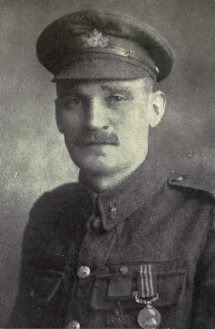Michael James O'Rourke facts for kids
Quick facts for kids
Michael James O'Rourke
|
|
|---|---|
 |
|
| Born | 19 March 1878 County Limerick, Ireland |
| Died | 6 December 1957 (aged 79) Burnaby, British Columbia, Canada |
| Buried | |
| Allegiance | |
| Service/ |
Canadian Expeditionary Force |
| Rank | Private |
| Unit |
|
| Battles/wars | World War I |
| Awards |
|
Michael James "Mickey" O'Rourke VC, MM (born March 19, 1878 – died December 6, 1957) was a brave soldier from Ireland who later became a Canadian citizen. He also worked as a dockworker. Mickey O'Rourke received the Victoria Cross (VC) and the Military Medal (MM). The Victoria Cross is the highest award for bravery given to soldiers in the British and Commonwealth forces. It is given for amazing courage when facing the enemy.
Michael O'Rourke: A War Hero
Early Life
Not much is known about Mickey O'Rourke's life before World War I. He was born in Limerick, Ireland. Before moving to Canada, he served in a group called the Royal Munster Fusiliers. After coming to Canada, he joined the Canadian militia in Revelstoke, British Columbia. He also worked as a miner.
Bravery in World War I
Mickey O'Rourke joined the Canadian Expeditionary Force in February 1915. This was during World War I. He had already earned the Military Medal for his bravery. This happened during a big battle called the Battle of the Somme.
Later, as a member of the 7th (1st British Columbia) Battalion, he showed incredible courage. This led to him receiving the Victoria Cross. The event took place between August 15 and 17, 1917. It happened near a place called Hill 17, close to Lens, France.
Private O'Rourke was a stretcher-bearer. His job was to help wounded soldiers. For three days and nights, he worked without stopping. He brought in injured soldiers, treated their wounds, and gave them food and water. The area where he worked was very dangerous. It was constantly hit by heavy machine-gun and rifle fire. Several times, enemy shells knocked him down. He was even partly buried by the explosions.
His amazing courage and dedication helped many people. He kept working despite being very tired. The constant heavy fire did not stop him. His actions inspired everyone around him. He truly saved many lives during this time.
Life After the War
After World War I, O'Rourke moved to California for a short time. He then returned to British Columbia. He faced tough times and struggled to make a living. He received a small disability pension of only 10 dollars each month. He also found casual work on the docks in Vancouver.
In 1935, there was a big strike by dockworkers in Vancouver. Mickey O'Rourke led a protest march of about 1,000 strikers. He wore his medals and carried the Union Jack. The marchers tried to get past a police line. The police were guarding the waterfront. The police attacked the marchers with clubs and tear gas. This event became known as the Battle of Ballantyne Pier.
Mickey O'Rourke passed away on December 6, 1957. He died at a Veterans' Affairs facility in Burnaby, BC. His grave is located at Forest Lawn Memorial Park in Burnaby.

